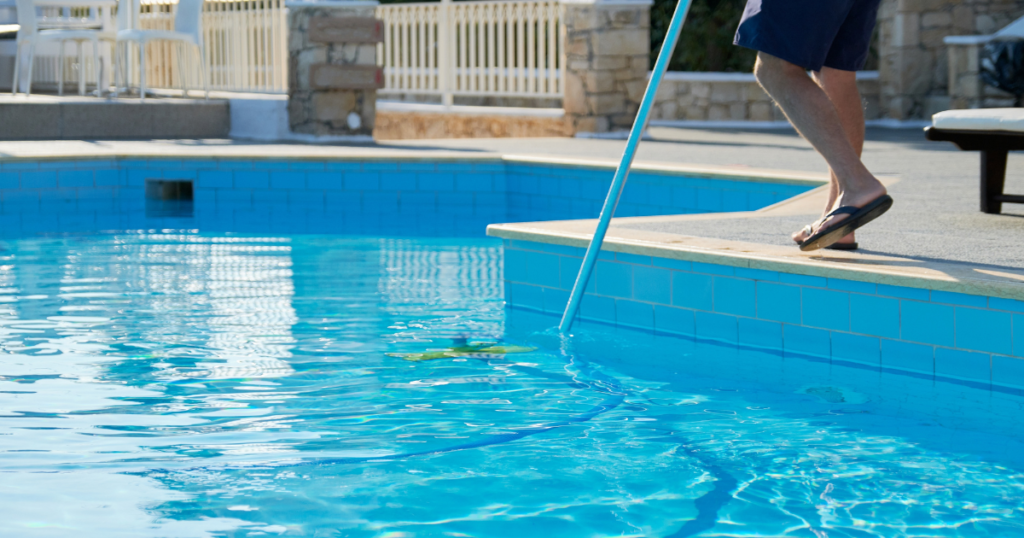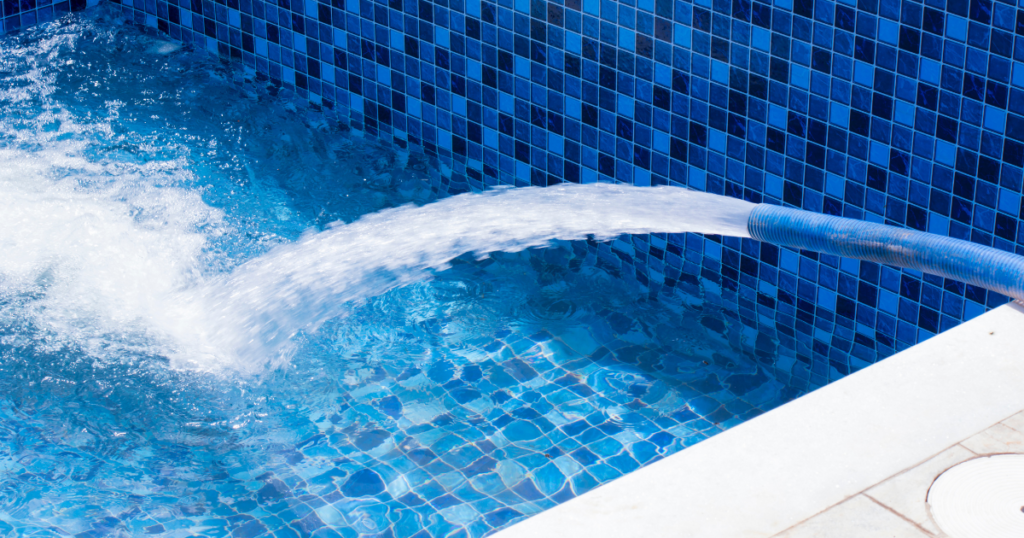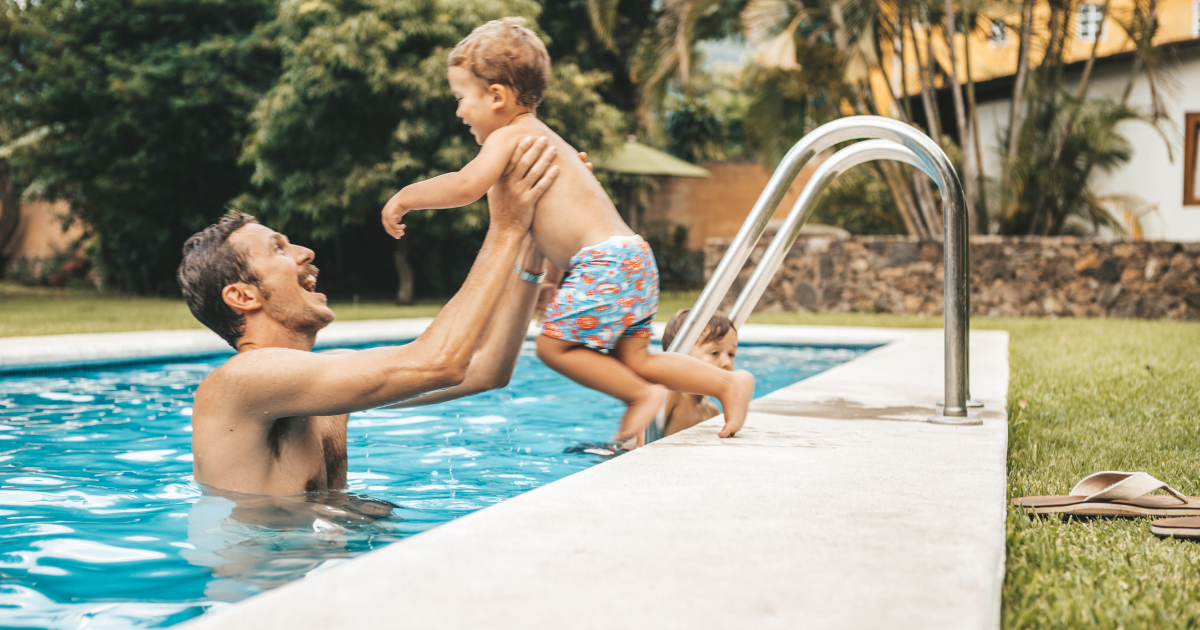Pool season is right around the corner, so it’s the perfect time to start planning for your pool reopening. Locating your pool cleaning tools, assessing the leftover pool maintenance chemicals you have on hand, and inspecting your pool equipment are all important steps to having a sparkling pool ready for you just in time for the hot weather.
Steps for reopening your swimming pool
Before reopening your pool this summer, you’ll want to follow certain crucial steps to ensure it’s clean, safe, and ready for use. Just remember that the months of fun in the sun are well worth it! We’ve gathered the basic steps for you to follow to awaken your in-ground pool.
Step 1: Remove the pool cover
If your pool has a winter cover, go ahead and remove it – make sure to clean it thoroughly before storing it away. To prolong the life of your pool cover, safely store it away from the elements, including insects and rodents. Putting in the extra effort here will save you a lot of lost time at the end of pool season.
Step 2: Clean your pool
After removing the pool cover, clear out any leaves, debris, and dirt that may have accumulated in the water. To make this job easier, start by using a skimmer net first to remove the larger debris. Then, use a pool vacuum to remove smaller particles from the bottom of the pool. You may need to scrub the pool walls or tile if algae has accumulated.

Step 3: Check the water chemistry
Of course, the water chemistry of your pool is of utmost importance. Use a pool testing kit to check the pH, alkalinity, and chlorine levels in your pool. Adjust the levels as needed to ensure that the water is balanced and safe for swimming. You will need to test the water chemistry regularly throughout the season, according to the instructions of your pool pump and filter system.
Step 4: Do you need to shock your pool?
If the pool water is particularly dirty or has been sitting stagnant for a while, you may need to shock the pool with a large dose of chlorine to kill any bacteria or algae that has grown. Follow the instructions on the shock treatment product carefully, and keep people and pets away from the pool until the chlorine levels return to normal.
Step 5: Check the equipment
As you are reopening your pool, carefully inspect the pool pump, filter, and heater to ensure they are all in good working order. Alternatively, hire a professional pool expert to do a maintenance visit. Clean or replace the pool filter as needed, and make any necessary repairs or adjustments. A high-quality pool filter will extend the life of your pool pump and filter system!
Step 6: Fill the pool to the recommended level
If the water level in the pool is low, add water until it reaches the proper level. Consider using a Water Softening spa-fill filter with Hose Attachment to prevent contaminants from entering your pool. Keep in mind that adding fresh water will impact the water chemistry, so you will need to monitor the pool water chemical levels closely.

Your pool is ready – Enjoy!
When your pool is clean, balanced, and the equipment is working properly, it’s time to dive in and enjoy it! Remember to regularly test the water chemistry, clean the pool routinely, and maintain the equipment throughout the summer to ensure your pool stays safe and enjoyable for your family and friends.
Opening an above-ground pool
Of course, many of these steps apply directly to reopening an above-ground pool, too. Small above-ground pools are sometimes packed away during colder seasons and then brought back out and re-filled when the weather warms up. After your above-ground pool is clean and set up, you can interpret and follow the steps above!
Other Frequently Asked Questions
How many hours should I run my pool in the summer?
On average, you should run your pool for 10-12 hours each day during the summer, compared to 6-8 hours during winter. The reason for running your pool longer in the summer is to prevent algae growth, since they thrive in warmer temperatures.
Is it better to run a pool pump at night or day?
Running your pool pump during the hottest parts of the day helps prevent algae growth while also removing bacteria and debris during peak swim times. You can also cut the runtime into shorter intervals and run during the morning as well as at night to maximize efficiency.
Should you turn off the pool pump while swimming?
It is safe to have the pool pump on while swimming. The pool pump helps prevent debris like fallen leaves, flower petals, and others from settling on your pool’s surface.
Can I leave my pool pump off for a week?
Yes. You can turn off your pool pump for a week or even a month, but remember that your pool will become dirty because the chemicals in your pool won’t circulate, making your pool water vulnerable to things like algae growth.

